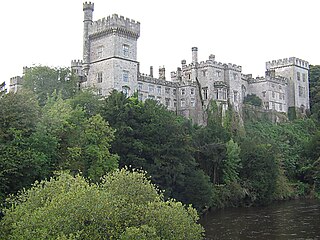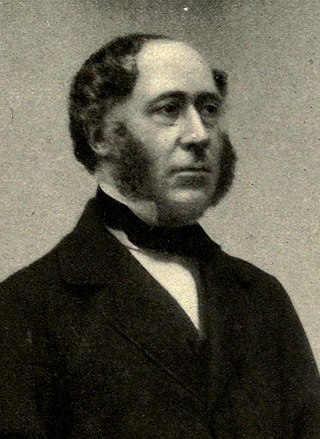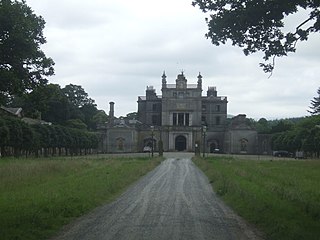
The Great Famine, also known as the Great Hunger, the Famine and the Irish Potato Famine, was a period of starvation and disease in Ireland lasting from 1845 to 1852 that constituted a historical social crisis and subsequently had a major impact on Irish society and history as a whole. The most severely affected areas were in the western and southern parts of Ireland—where the Irish language was dominant—and hence the period was contemporaneously known in Irish as an Drochshaol, which literally translates to "the bad life" and loosely translates to "the hard times". The worst year of the famine was 1847, which became known as "Black '47". During the Great Hunger, roughly 1 million people died and more than 1 million more fled the country, causing the country's population to fall by 20–25% between 1841 and 1871. Between 1845 and 1855, at least 2.1 million people left Ireland, primarily on packet ships but also on steamboats and barques—one of the greatest exoduses from a single island in history.
Free sale, fixity of tenure, and fair rent, also known as the Three Fs, were a set of demands first issued by the Tenant Right League in their campaign for land reform in Ireland from the 1850s. They were,

The Irish National Land League, also known as the Land League, was an Irish political organisation of the late 19th century which organised tenant farmers in their resistance to exactions of landowners. Its primary aim was to abolish landlordism in Ireland and enable tenant farmers to own the land they worked on. The period of the Land League's agitation is known as the Land War. Historian R. F. Foster argues that in the countryside the Land League "reinforced the politicization of rural Catholic nationalist Ireland, partly by defining that identity against urbanization, landlordism, Englishness and—implicitly—Protestantism." Foster adds that about a third of the activists were Catholic priests, and Archbishop Thomas Croke was one of its most influential champions.

Clonmany is a village and civil parish in north-west Inishowen, in County Donegal, Ireland. The Urris valley to the west of Clonmany village was the last outpost of the Irish language in Inishowen. In the 19th century, the area was an important location for poitín distillation. Outside the village, there are a number of notable townlands, including Kinnea (Rockstown), Crossconnell, Dunaff, and Leenan.

Lismore is a historic town in County Waterford, in the province of Munster, Ireland. Originally associated with Saint Mochuda of Lismore, who founded Lismore Abbey in the 7th century, the town developed around the medieval Lismore Castle. As of the 21st century, Lismore supports a rural catchment area, and was designated as a "district service centre" in Waterford County Council's 2011–2017 development plan. As of 2022, the town had a population of 1,347 people.

Strokestown, also known as Bellanamullia and Bellanamully, is a small town in County Roscommon, Ireland. It is one of the 27 designated Heritage Towns in Ireland. Located in the part of the country marketed for tourism purposes as Ireland's Hidden Heartlands, it is 140 km (87 mi) from Dublin and 120 km (75 mi) from Galway. Strokestown is one of Ireland's few planned towns, showing evidence of deliberate planning, such as formally aligned streets and prominent public buildings.

George Henry Moore was an Irish politician who, in the 1850s, was a co-founder of the Tenant Right League, of the Catholic Defence Association and, as the Member for Mayo in the United Kingdom Parliament, of the Independent Irish Party. Although an advocate of tenant rights, and renowned for his relief efforts during the Great Famine, at the time of his death in 1870 Moore was defending his rights as a landowner against an oath-bound tenant society, the Ribbonmen. He was the father of the novelist George Augustus Moore and of the Fianna Fáil Senator Maurice George Moore.

A demesne or domain was all the land retained and managed by a lord of the manor under the feudal system for his own use, occupation, or support. This distinguished it from land sub-enfeoffed by him to others as sub-tenants. In contrast, the entire territory controlled by a monarch both directly and indirectly via their tenant lords would typically be referred to as their realm. The concept originated in the Kingdom of France and found its way to foreign lands influenced by it or its fiefdoms.
The Land Acts were a series of measures to deal with the question of tenancy contracts and peasant proprietorship of land in Ireland in the nineteenth and twentieth centuries. Five such acts were introduced by the government of the United Kingdom between 1870 and 1909. Further acts were introduced by the governments of the Irish Free State after 1922 and more acts were passed for Northern Ireland.
The Whiteboys were a secret Irish agrarian organisation in 18th-century Ireland which defended tenant-farmer land-rights for subsistence farming. Their name derives from the white smocks that members wore in their nighttime raids. Because they levelled fences at night, they were usually called "Levellers" by the authorities, and by themselves "Queen Sive Oultagh's children", "fairies", or followers of "Johanna Meskill" or "Sheila Meskill". They sought to address rack-rents, tithe-collection, excessive priests' dues, evictions, and other oppressive acts. As a result, they targeted landlords and tithe collectors. Over time, Whiteboyism became a general term for rural violence connected to secret societies. Because of this generalization, the historical record of the Whiteboys as a specific organisation is unclear. Three major outbreaks of Whiteboyism occurred: in 1761–1764, 1770–1776, and 1784–1786.

The Land War was a period of agrarian agitation in rural Ireland that began in 1879. It may refer specifically to the first and most intense period of agitation between 1879 and 1882, or include later outbreaks of agitation that periodically reignited until 1923, especially the 1886–1891 Plan of Campaign and the 1906–1909 Ranch War. The agitation was led by the Irish National Land League and its successors, the Irish National League and the United Irish League, and aimed to secure fair rent, free sale, and fixity of tenure for tenant farmers and ultimately peasant proprietorship of the land they worked.
The Ballinlass incident was the eviction of 300 tenants on 13 March 1846 in Ireland, in the context of the Great Famine in Ireland (1845–1849). At this time, Ireland was part of the United Kingdom of Great Britain and Ireland, governed directly by its parliament in London. Many working class Irish farmers were tenants under landlords, producing cereals, potatoes and livestock. But only the potatoes remained as food for the farmers themselves; the other products were used for paying the rent and exported from Ireland to Great Britain. These exports continued when the potato crop failed in 1845.
The Hearts of Steel, or Steelboys, was an exclusively Protestant movement originating in 1769 in County Antrim, Ireland due to grievances about the sharp rise of rents and evictions. The protests then spread into the neighbouring counties of Armagh, Down, and Londonderry, before being put down by the army.
The Tenant Right League was a federation of local societies formed in Ireland in the wake of the Great Famine to check the power of landlords and advance the rights of tenant farmers. An initiative of northern unionists and southern nationalists, it articulated a common programme of agrarian reform. In the wake of the League's success in helping return 48 pledged MPs to the Westminster Parliament in 1852, the promised unity of "North and South" dissolved. An attempt was made to revive the all-Ireland effort in 1874, but struggle for rights to the land was to continue through to the end of the century on lines that reflected the regional and sectarian division over Ireland's continued place in the United Kingdom.

The Plan of Campaign was a stratagem adopted in Ireland between 1886 and 1891, co-ordinated by Irish politicians for the benefit of tenant farmers, against mainly absentee and rack-rent landlords. It was launched to counter agricultural distress caused by the continual depression in prices of dairy products and cattle from the mid-1870s, which left many tenants in arrears with rent. Bad weather in 1885 and 1886 also caused crop failure, making it harder to pay rents. The Land War of the early 1880s was about to be renewed after evictions increased and outrages became widespread.

Lisnavagh Estate is an estate house which lies outside the village of Rathvilly in County Carlow, Ireland. Lisnavagh is the family seat of the McClintock-Bunbury family, Barons Rathdonnell. A plaque in the present house states that the original house at Lisnavagh was built by William Bunbury in 1696. A map from the 1840 Ordnance Survey shows this in the parklands below the current house, with some modest farm buildings close by. The 1840 map also shows "Foundations of House" to the northwest, near the top of the hill, which is where a new house was planned but never completed. The new house was ultimately built nearer to the old house.

The Highland Clearances were the forced evictions of a significant number of tenants in the Scottish Highlands and Islands, mostly in two phases from 1750 to 1860.

Clifden Castle is a ruined manor house west of the town of Clifden in the Connemara region of County Galway, Ireland. It was built c. 1818 for John D'Arcy, the local landowner, in the Gothic Revival style. It fell into disrepair after becoming uninhabited in 1894. In 1935, ownership passed to a group of tenants, who were to own it jointly, and it quickly became a ruin.
The term big house refers to the country houses, mansions, or estate houses of the historical landed class in Ireland, which is itself known as the Anglo-Irish class. The houses formed the symbolic focal point of the Anglo-Irish political dominance of Ireland from the late 16th century, and many were destroyed or attacked during the Irish revolutionary period.

Curraghmore near Portlaw, County Waterford, Ireland, is a historic house and estate and the seat of the Marquess of Waterford. The estate was part of the grant of land made to Sir Roger le Puher by Henry II in 1177 after the Anglo-Norman invasion of Ireland. Since then, the De La Poer Beresford family has owned these estates. It is the oldest family home in Ireland.














